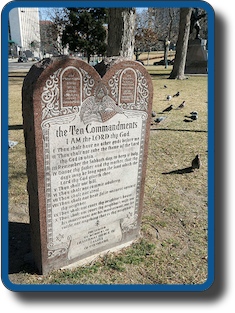Working with the State
09/2018 State Regulations

Post a comment about: "How Christian's should work with state regarding education."
Civic Health Supports Light Regulation
However, I go further than basing my concern for minimal regulation on religious interests or liberal consistency; I base the merit of minimal regulation on the public’s educational interests. Elsewhere, I have argued the religious schools are valuable to the state, but this value is in proportion to the vitality of the faith and community within each school. The more narrowly one defines the public’s interests, the more it will require religious schools to look like common schools with a corresponding loss of religious identity. For example, if state regulations broadly act against religious concerns, such as requiring the equal hiring/admission of employees/students apart from the faith concerns of schools, religious schools will be undermined and provide little benefit to the state or their students.
The research of both Robert Putnam and Rodney Stark support the conclusion that the control of faith leads to its decline.[4] Religious schools are highly valued and influential in the lives of their attending families because they align with their conscientiously held views. To the degree that religious schools are perceived to compromise their views, they lose their position of familial and community trust and thus, their deep influence. Hence, the state must only regulate religious schools lightly if these schools are to remain the vitally nurturing sources that I described them to be. Thus, if my arguments regarding the public value of religious schooling move the state toward religious school choice, they must also move the state to regulate with a minimum of intrusion and offense. (Edited excerpts from my dissertation, Moral and Civic Education and the Public Value of Religious Schools, 2009.
References:
[1] Ohio v. Whisner , 351 N.E.2d 750 (Ohio 1976).
[2] Gilles, On Educating Children: A Parentalist Manifesto, 946.
[3] Ibid., 954.
[4] Putnam, Bowling Alone: The Collapse and Revival of American Community, 19, Roger Finke and Rodney Stark, The Churching of America, 1776-2005: Winners and Losers in our Religious Economy, Rev. ed. (Piscataway, N.J; London: Rutgers University Press, 2005), 368.
Society for the Advancement of Christian Education
blog comments powered by Disqus
